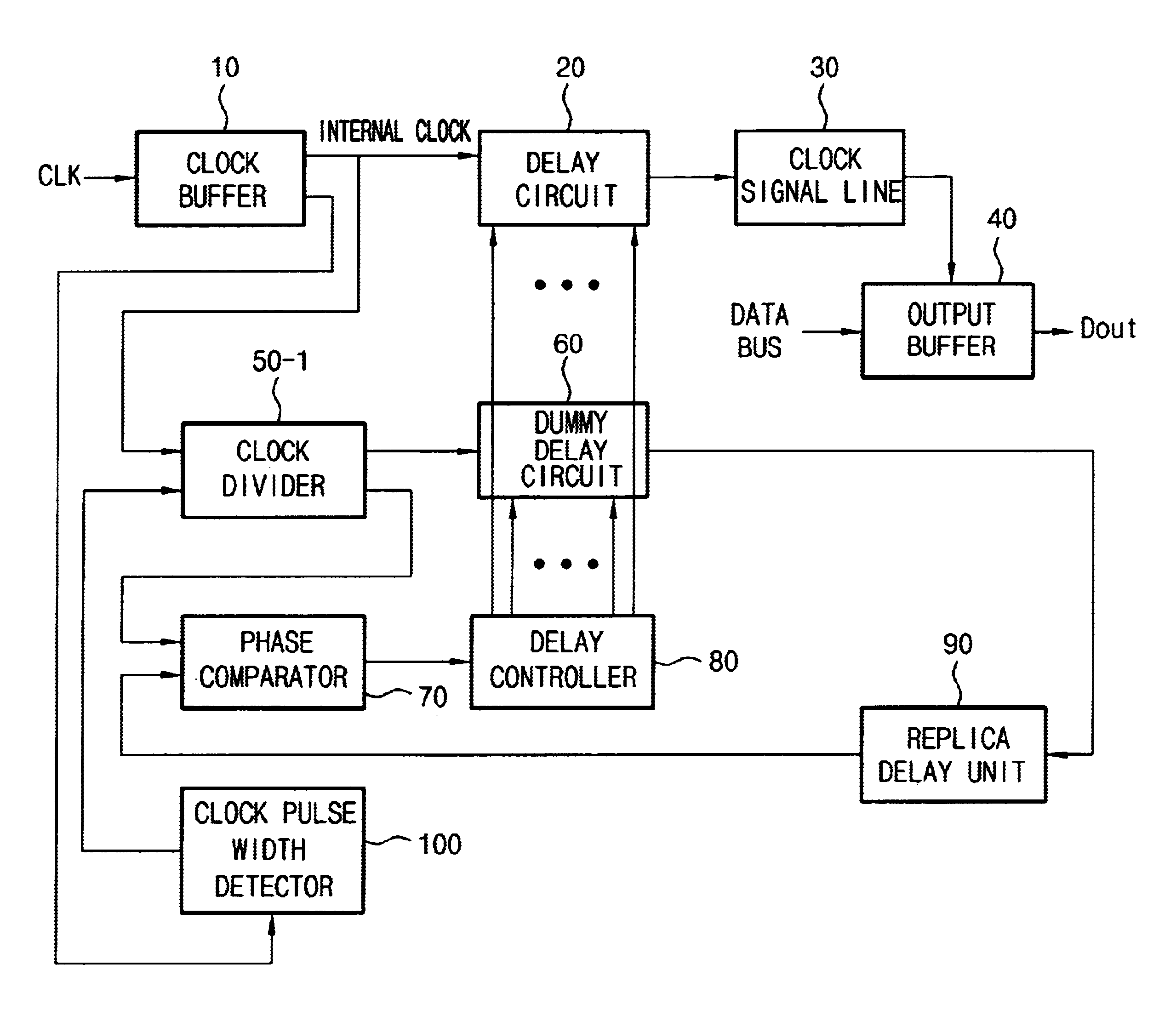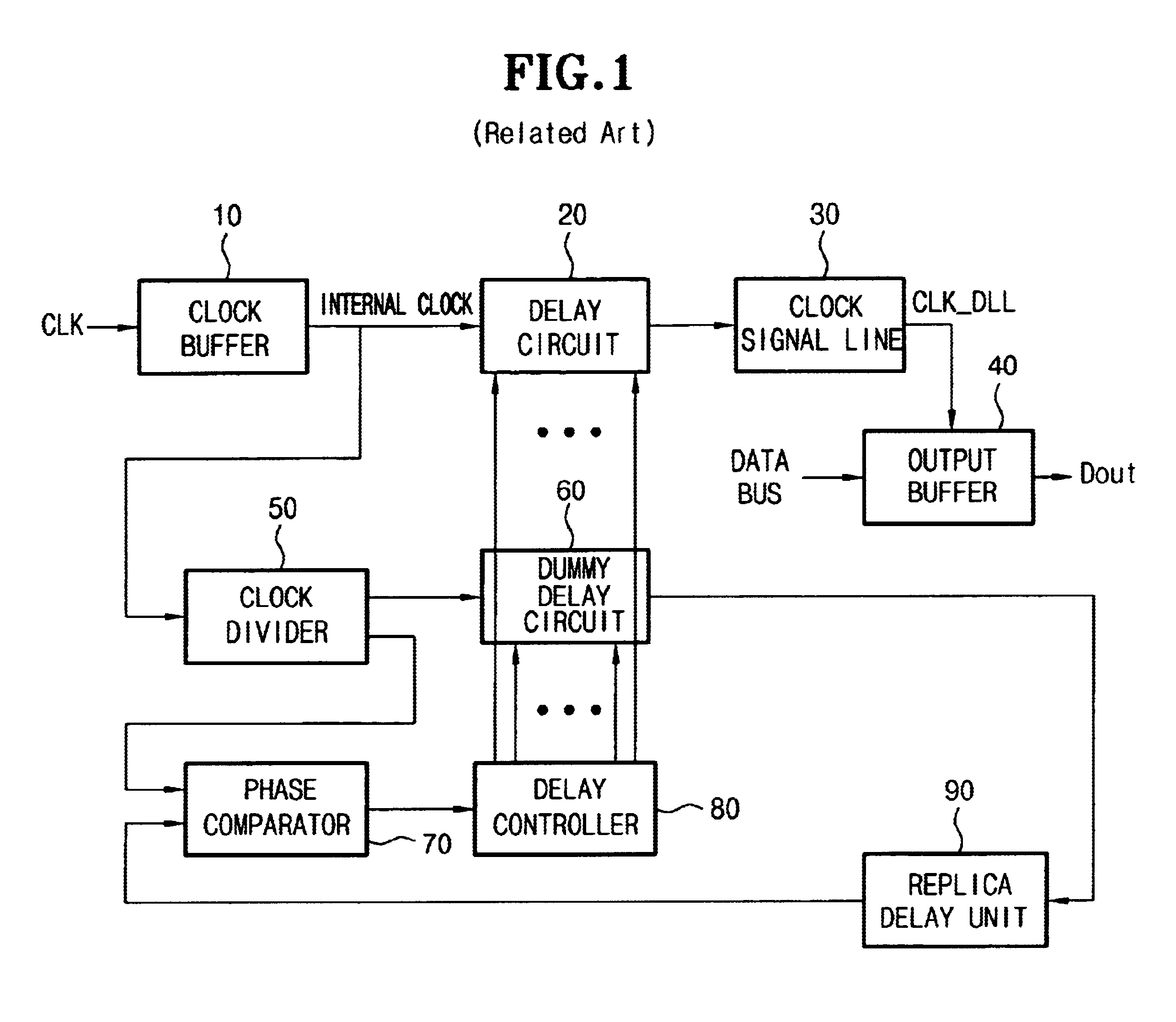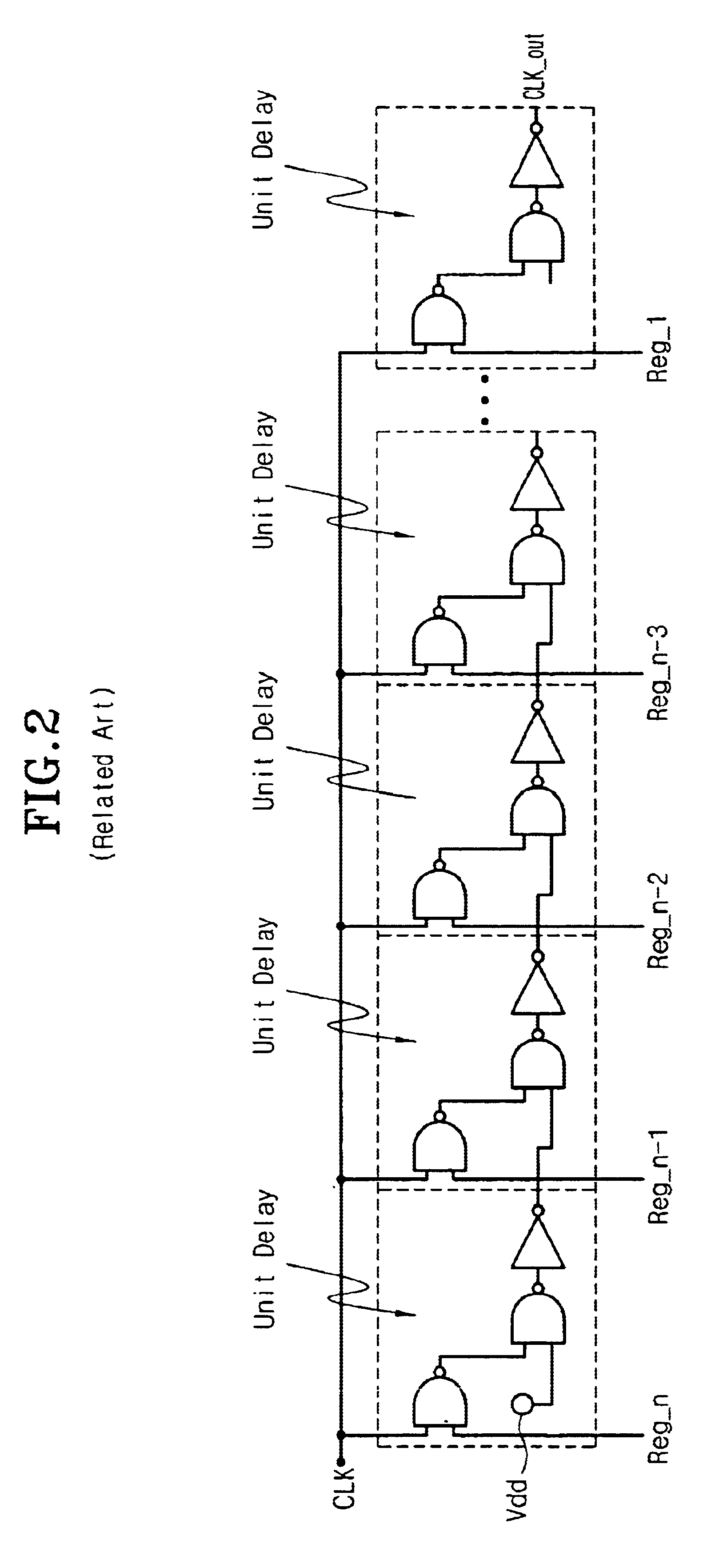DLL circuit
- Summary
- Abstract
- Description
- Claims
- Application Information
AI Technical Summary
Benefits of technology
Problems solved by technology
Method used
Image
Examples
Embodiment Construction
[0062]Hereinafter, preferred embodiments of the present invention will be described with reference to the accompanying drawings. In the following description and drawings, the same reference numerals are used to designate the same or similar components, and so repetition of the description on the same or similar components will be omitted. Also, in the description, the expression of “—the period of the clock signal is short or small—” means that the pulse width of the clock signal is narrow, and “—the period of the clock signal is long—” means that the pulse width of the clock signal is wide.
[0063]FIG. 9 is a block diagram of a DLL circuit according to the present invention.
[0064]As shown in FIG. 9, the DLL circuit according to the present invention includes a clock buffer 10 for receiving an external clock signal, a delay circuit 20 for receiving an output signal of the clock buffer 10, a clock divider 50-1 for dividing the output signal of the clock buffer 10, a dummy delay circui...
PUM
 Login to View More
Login to View More Abstract
Description
Claims
Application Information
 Login to View More
Login to View More - R&D
- Intellectual Property
- Life Sciences
- Materials
- Tech Scout
- Unparalleled Data Quality
- Higher Quality Content
- 60% Fewer Hallucinations
Browse by: Latest US Patents, China's latest patents, Technical Efficacy Thesaurus, Application Domain, Technology Topic, Popular Technical Reports.
© 2025 PatSnap. All rights reserved.Legal|Privacy policy|Modern Slavery Act Transparency Statement|Sitemap|About US| Contact US: help@patsnap.com



